 Class C Duty Uniforms
Class C Duty Uniforms
![]()
|
Original Series Duty Uniform Composition: This Duty Uniform is comprised of the Shirt and the Original Series Trousers, and accessories and accoutrement as authorized below. Shirt: The shirt is the standard uniform shirt seen in episodes of Star Trek (the Original Series). It is charcoal instead of a branch or departmental color. The shirt is worn outside the trousers, not tucked into the waistband. Trousers: the trousers are black in color, low waist, bell bottomed and without side and hip pockets. The trousers are worn bloused into or at the top of the boot. Belt: The black web belt is worn with the buckle edge aligned with the shirt and pant closure edges. The buckle is gold for officers, silver for enlisted. Headgear: Only the beret is authorized for wear with the Duty Uniform, Original Series. Footwear: Black boots, no laces, like those seen in Star Trek (The Original Series) may be worn with the Duty Uniform, Original Series. Acceptable options are high gloss or shined black dress shoes if bell bottom trousers are not worn. Insignia & accouterments: Only the following listed items are authorized for wear. Insignia of Grade, Sleeve Braid – Worn on both sleeves, using same format as rank worn in Star Trek (The Original Series). Gold Braid for Officers, Silver Braid for Enlisted Marines. Braid is to begin 2” above the Sleeve cuff. Please consult the rank chart in this manual for exact rank to be worn. Non-metallic braid may be used if it is substantially like the braid seen on Star Trek. SFMC Insignia (Collar Brass) – to be worn ½” above highest rank braid. Chest Badge – Worn in the usual place on the left chest. This insignia consists of one of the following: ⎯ Your Chapter Insignia (NOT Chapter Patch) if one has been developed (similar to the insignia used by the different ships of Starfleet as shown on Star Trek, The Original Series). ⎯ A silver “Trek Delta Original Series Duty Uniform Female
This variant replaces the Duty Trousers with the Duty Skirt and changes the footwear to more feminine styles. Women may wear the Male Variant of this uniform if they so choose. Skirt: This is a plain black skirt (mini skirt is worn on Star Trek (Original Series)) and shall be hemmed so the edge falls within a range of 2-4 inches above the knee. It should be without side hip pockets. Footwear: There are two types of footwear authorized with the Woman’s variant. Plain black pumps and hosiery are worn with the skirt. The pumps should be highly polished, have no bows or decorations, and have heels of 3 inches or less. Stockings or pantyhose should be flesh-toned, without decoration or visible seams. Fishnet, lace, polished, or multicolored hosiery is specifically prohibited. Calf-high black boots are also authorized. Boots will be polished, have no decorations, plain toe and have heels of three inches or less. Combat boots are not authorized to be worn with the dress skirt. Insignia & Accoutrement: Star Trek: The Next Generation Duty Uniform
Occasions for Wear: Composition: The Duty Uniform is comprised of the jacket and trousers, and accoutrements as authorized below. Tunic: The tunic is a pull over style with collar as seen in episodes of Star Trek: The Next Generation (seasons 3-7), and early episodes of Deep Space Nine. Keeping with the TOS SFMC tradition the color is charcoal with black shoulders instead of departmental color. Trousers: Duty Trousers are black in color, low waist, flat front, straight legged with, or without, side, and hip pockets. Simple black dress slacks without any product labels will suffice. Headgear: The beret is the only headgear authorized for wear with the Duty Uniform. Footwear: High gloss black dress shoes, or ankle boots may be worn with the Duty Uniform, Type B. Aerospace branch and parachute qualified members of the Infantry and Special Operations Branches may wear spit shined Jump boots. Insignia & Accoutrements: Only the following listed items are authorized for wear. Combadge – worn on the left chest, centered left to right along imaginary vertical line drawn from where the shoulder meets the neck of the jacket, down along the body of the tunic, and 1/2 inch below the shoulder yoke seam (1/2 inch into the charcoal colored material of the body of the tunic). Branch Devices (Type A Insignia) – worn on left chest, centered left to right along imaginary vertical line drawn from where the shoulder meets the neck of the jacket, down along the body of the tunic, and 1/2 inch above the shoulder yoke seam (or 1 inch above the combadge) and centered on the combadge. Only one branch device will be worn at any time. Collar Brass – worn on the left collar of the tunic, 1 inch from the edge of the collar, centered top to bottom, and vertical to the deck. Insignia of Grade – worn on the right collar of the tunic, 1 inch from the edge of the collar, centered top to bottom. – Officer’s Bars – worn vertically with the bottom edge of the insignia parallel to the seam between the body of the tunic and the collar. – NCO Chevrons – worn horizontally with the bottom edge of the insignia parallel to the seam between the body of the tunic and the collar. Greatest number of chevrons will be worn pointing to the front of the neck. Deep Space 9, Nemesis Duty Uniform
Occasions for Wear: Composition: The Duty Uniform is comprised of the jacket, trousers, a branch of service undershirt/dickey, and accoutrements as authorized below. Jacket: The jacket is the standard open collar, shoulder cut, Starfleet issue top. It is black with gray shoulders. The shoulder area is quilted vertically. The jacket is worn outside the trousers, not tucked into the waistband. Both sleeves have a 1-inch wide stripe in the Marine’s branch of service. Special color combinations are authorized and correspond with shoulder cord color combinations for the General Staff, Deputy Commandant and Commandant and the following combinations are authorized for other distinguished officers: Past Commandants – Gold and Blue, Brigade OICs – Red and Black. Branch of Service Undershirt/Dickey: an undershirt/dickey in the individual’s branch color will be worn under the jacket. First Sergeants, Sergeants Major, Unit Officers in Charge, and General Staff Officers may wear a white undershirt/dickey instead of the branch of service color. Trousers: the trousers are black in color, low waist, flat front, straight legged, with, or without, side, and hip pockets. Simple black dress slacks without any product labels will do. The trousers are worn unbloused. BDU/Tactical Trousers: Tactical trousers are six, eight, or eleven pocket black trousers, and are authorized for wear when the Duty Uniform is worn as a Class C, or field uniform. Unlike BDU trousers, tactical trousers are less baggy, and do not have articulated knees. The trousers will be worn bloused with military style boots in this configuration. Belt: The black web belt is authorized for wear with the trousers. Headgear: The beret is the only headgear authorized for wear with the Duty Uniform. Footwear: Dress shoes, or ankle boots are authorized for wear with the Duty Uniform. Military style boots are only authorized for wear with the Class C (BDU) trouser, when the Duty Uniform is worn as a field uniform. Insignia & Accoutrements: Only the following items are authorized for wear. Combadge – worn on the left chest, centered left to right, along imaginary vertical line drawn from where the shoulder meets the neck of the jacket, down along the body of the jacket, and 1/2 inch below the bottom stitching of the shoulder quilting. Branch Devices (Type A Insignia) – worn on left side of chest, centered, left to right, along imaginary vertical line drawn from where the shoulder meets the neck of the jacket, down along the body of the jacket, and 1/2 inch above top stitching of the shoulder quilting. Only one branch device will be worn at any time Collar Brass– Worn on the left collar of the undershirt, and vertical to the deck. The leading edge of the insignia is 1.5-inches from, and parallel to the zipper of the undershirt. If a dickey is being worn, and has no zipper, the insignia will be placed accordingly from the center of the neck of the dickey. All Marines will wear collar brass while in duty uniform. Insignia of Grade – worn on the right collar of the undershirt, and vertical to the deck. – Officer’s Bars – worn vertically, with the leading edge of the insignia parallel to the zipper seam of the undershirt, and the bottom edge parallel to the seam between the body of the undershirt and the collar. The leading edge of the insignia is 1.5-inches from the zipper of the undershirt. If a dickey is being worn, and has no zipper, the insignia will be placed accordingly from the center of the neck of the dickey. Any filled (black bars) are worn furthest away from the edge of the zipper or the center of the collar. – NCO Chevrons – worn horizontally with the leading edge of the insignia parallel to the zipper seam of the undershirt, and the bottom edge parallel to the seam between the body of the undershirt and the collar. The leading tip of the insignia is 1.5-inches from, and parallel to the zipper of the undershirt. If a dickey is being worn, and has no zipper, the insignia will be placed accordingly from the center of the neck of the dickey. The greatest number of chevrons will be worn pointing to the front of the neck. Engineer Duty Uniform Scotty C
Occasions for Wear: Composition: The All Weather Work Uniform is comprised of the Duty Vest, work trousers, a working shirt, and accessories and accoutrement as authorized below. Vest: The Duty Vest is a black, roughly hip length vest with a squared off hem and a front closure, roughly similar to those worn by Starfleet personnel in the late 23rd century. The duty vest shall be of generally solid construction (i.e. not primarily composed of a mesh fabric) and may include useful pockets. Due to local supply situations, the details of the appearance of the duty vest may vary from unit to unit, but all members of the same unit should endeavor to wear similar if not identical vests. The details of insignia and accoutrement worn on the duty vest are described in the uniform descriptions referencing the vest. Work Trousers: The work trousers are black, of suitable sturdiness for the job at hand. Trousers may be BDU or Cargo style in order to provide more useful pockets, Short trousers may be authorized by local commanders where conditions warrant. Work Shirt: The shirt may be any shirt of neat, clean appearance appropriate for the weather. This includes, but is not limited to T-shirts, polos, long or short sleeved working shirts, etc. Every effort should be made for all members of a unit to wear the same shirt to present a uniform appearance, but individual Marines should not feel compelled to wear a shirt that may present them with safety risks in the interests of uniform appearance. Belt: The black web belt is worn with the trousers, under the vest. A black pistol belt may be worn with the uniform to hold potentially useful items too large to conveniently fit in any pocket such as a canteen, large flashlight, individual first aid kit, tools, etc. Headgear: Either the black eight-point cover, the black beret, or Black ball cap with SFMC, BDE or Unit patch affixed may be worn. The headgear worn should be appropriate to weather conditions. Footwear: Any black or dark footwear in good repair and neat condition appropriate to the weather and type of work being performed may be worn. Trousers may be worn bloused or unbloused with boots. Insignia & Accoutrement: Only the following items are authorized for wear. Insignia of Grade – Because of the possible variation in shirts, rank insignia are worn centered on the right breast pocket flap of the Duty Vest, centered on the pocket if no flap exists, or in an equivalent location if no such pocket exists. The rank insignia may be either standard metal pins or embroidered cloth insignia of the same size. SFMC Insignia (Collar Brass) – Worn centered on the left breast pocket flap of the Duty Vest or equivalent location only if neither the optional SFMC patch nor SFMC tape is worn. SFMC Patch – If worn, is worn centered on the right breast pocket. A patch for the aircraft flown by the pilot may be worn in this position. Brigade Patch – At the discretion of local commanders, a BDE patch may be worn prominently on the right side of the Duty Vest. Due to the possible variations of the Duty Vest, no exact location for this patch can be specified, other than it should be at least W inch below the rank insignia. All members of a unit should wear the BDE patch in an equivalent location. Nametape – As an option, a name tape exactly as called out for the Class C BDUs may be worn above the right breast pocket of the Duty Vest. If no such pocket exists, the name tape is worn above and centered on the rank insignia. If the name tape is worn, the SFMC tape must also be worn. SFMC Tape – As option, the same SFMC tape called out for the Class D Utility uniform may be worn in an equivalent location on the left side of the Duty Vest. Branch Devices (Type A Insignia) – If the wearer is entitled to wear distinctive items (such as Aviator wings), they may wear a single embroidered device insignia stitched 1/2 inch above and centered on the SFMC tape (if worn) or in an equivalent location on the Duty Vest. Special note: it is permissible for all the cloth insignia and accoutrement listed above be attached with a hook and loop faster (i.e. Velcro) to the Duty Vest to allow the same vest to be used for both the All Weather Work Uniform and Service Undress Uniform, provided the vest is kept clean and in good repair. The entire purpose of this uniform is to allow some uniformity of appearance for units participating in operations potentially hazardous to more expensive, less robust attire. Effort should be made among the members of such units to be as closely matching as possible given the circumstances. It should be noted, however, that UNDER NO CIRCUMSTANCES WILL UNIFORM APPEARANCE OVERRIDE THE SAFETY CONSIDERATIONS OF Picard 2399 Duty Uniform
Composition: The Duty Uniform is comprised of the shirt, pants, a black undershirt/dickey, and accoutrements as authorized below. There is no female version of this uniform. Shirt: The shirt is the mandarin collared, shoulder cut Starfleet issue top. It is black with distinct departmental colored shoulders/yoke. The jacket is worn outside the pants, not tucked into the waistband. All Marine branches of service will wear the yellow departmental color, except for Medical, which will wear blue. Undershirt/Dickey: a black undershirt/ will be worn under the shirt. It may be either a mock turtle dickie or high collared t-shirt. Pants: the pants are black in color, low waist, flat front, straight legged, with, or without, side, and hip pockets. Simple black dress slacks without any product labels will do. The pants are worn unbloused. BDU/Tactical Pants: Tactical pants are six, eight, or eleven pocket black pants, and are authorized for wear when the Duty Uniform is worn as a Class C, or field uniform. Unlike BDU pants, tactical pants are less baggy, and do not have articulated knees. The pants will be worn bloused with military style boots in this configuration. Belt: The black web belt is authorized for wear with the pants. Headgear: The beret is the only headgear authorized for wear with the Duty Uniform. Footwear: Dress shoes, or ankle boots are authorized for wear with the Duty Uniform. Military style boots are only authorized for wear with the Class C (BDU) pant when the Duty Uniform is worn as a field uniform. Insignia & Accoutrements: Only the following items are authorized for wear. Branch Devices (Type A Insignia) – worn on left side of chest, centered, left to right, along an imaginary vertical line drawn from where the shoulder meets the neck of the jacket, down along the body of the jacket, and 1/2 inch above the stitching of the shoulder yoke. Only one branch device will be worn at any time. Combadge – worn on the left chest, centered left to right, along an imaginary vertical line drawn from where the shoulder meets the neck of the jacket, down along the body of the jacket, and 1/2 inch below the bottom stitching of the shoulder yoke. Insignia of Grade – worn on right side of chest, centered, left to right, along an imaginary vertical line drawn from where the shoulder meets the neck of the jacket, down along the body of the jacket, and 1/2 inch below the stitching of the shoulder yoke. – Officer’s Bars – Any filled (black bars) are worn to the left of unfilled bars as seen by an observer. – NCO Chevrons –The greatest number of chevrons will be worn to the left as seen by an observer. |
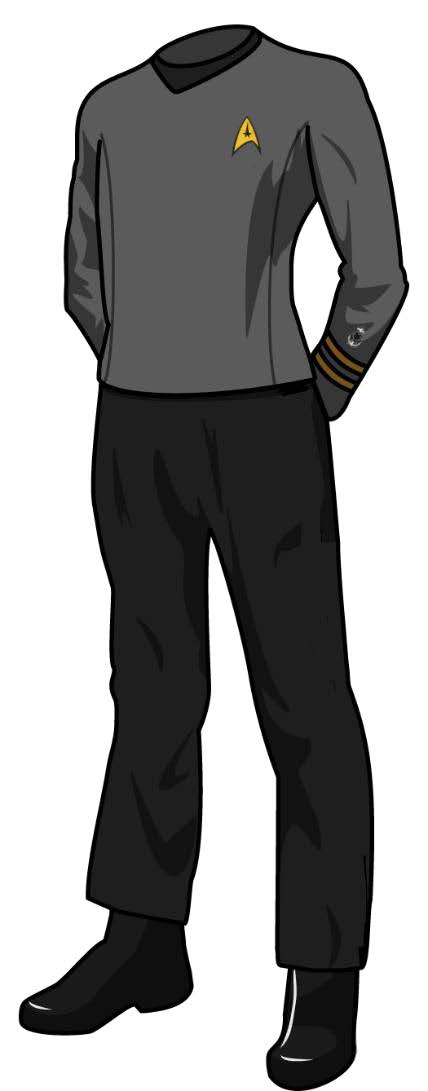 ons for Wear:
ons for Wear: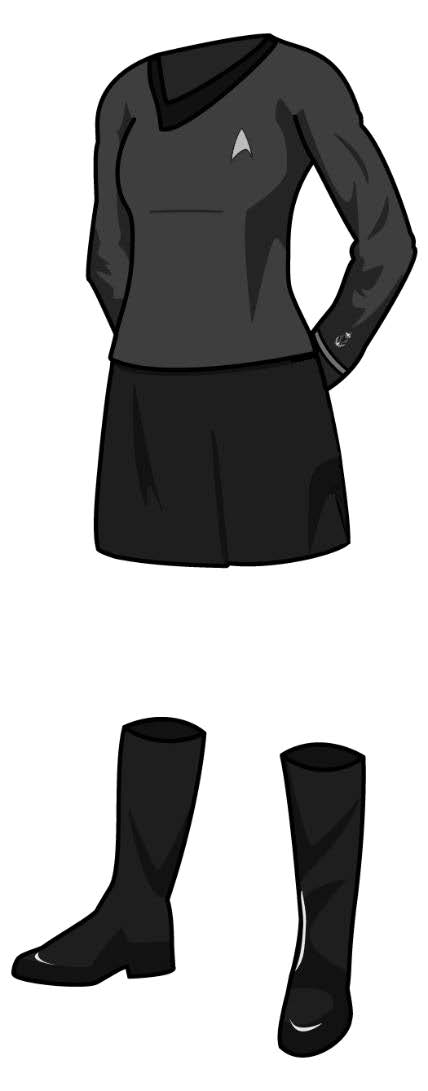
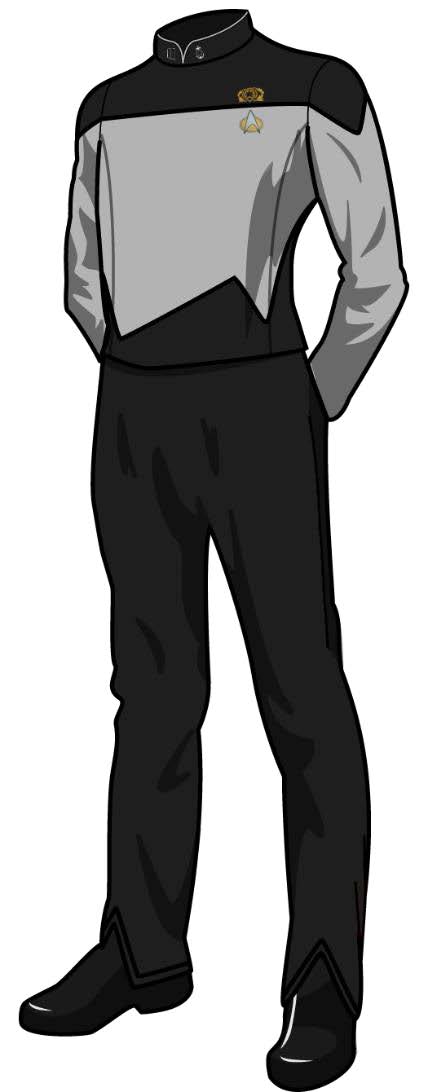
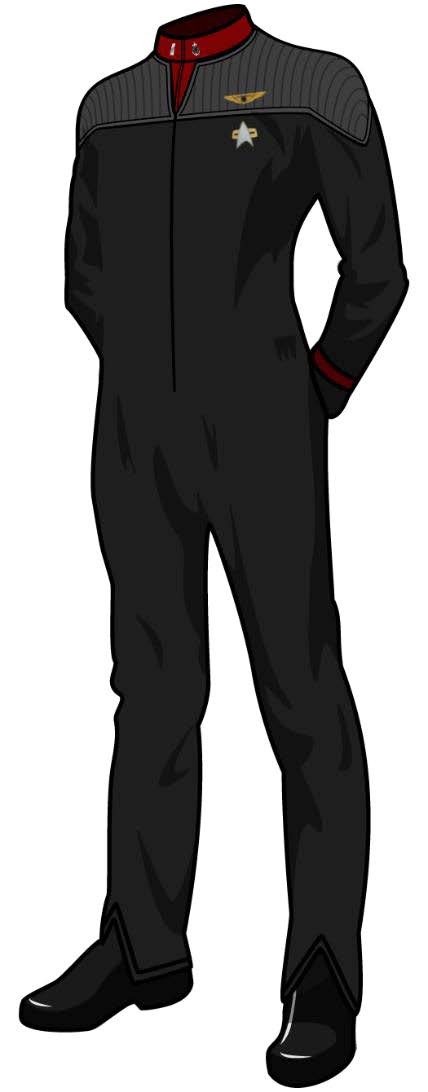
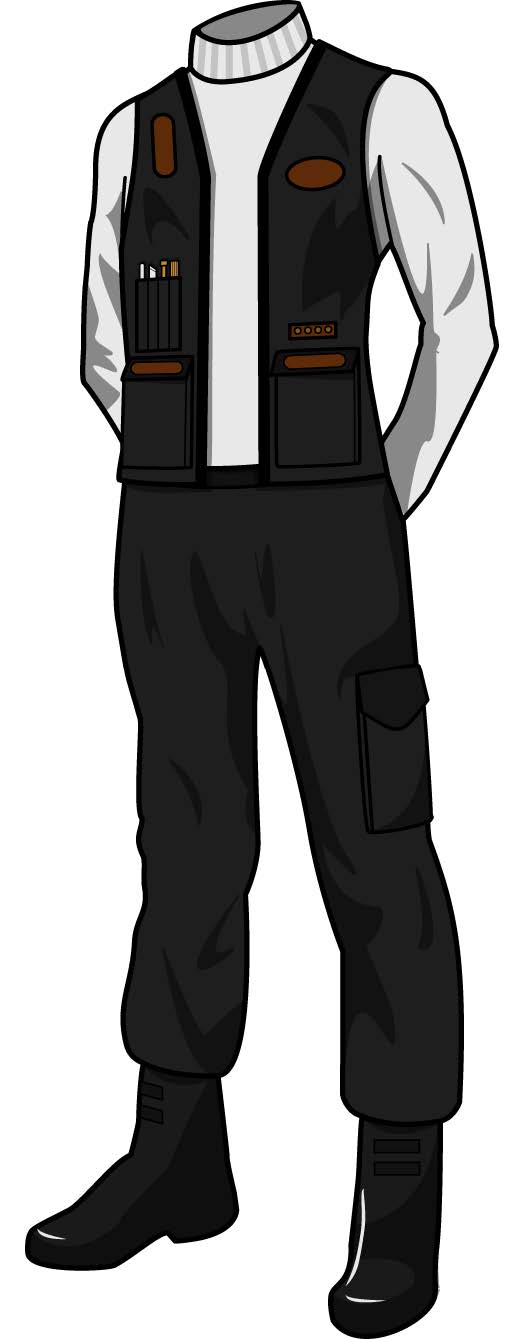
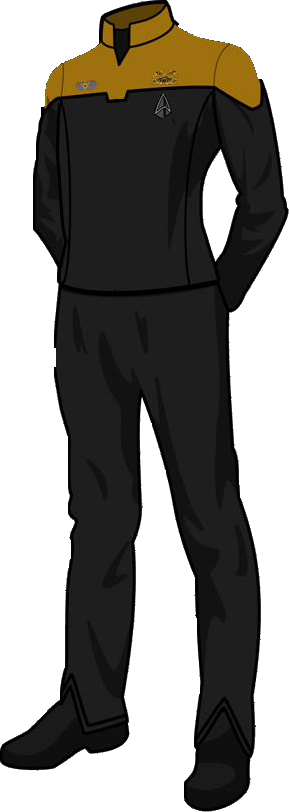 Occasions for Wear:
Occasions for Wear: